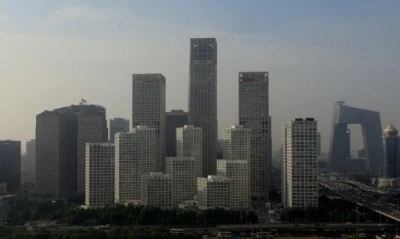A recent study published in the journal Science has unveiled alarming findings about the state of China’s urban landscape, indicating that nearly half of its major cities are sinking due to a combination of factors including excessive water extraction and the growing weight of urban infrastructure. Cities such as Beijing and Tianjin are particularly vulnerable, with the research highlighting a “moderate to severe” risk of subsidence in these areas.
According to the study, conducted between 2015 and 2022, 45 per cent of China’s urban land is sinking at a rate exceeding 3 milli metres per year, with 16 per cent experiencing subsidence of over 10 milli metres per year. The research team examined 82 cities with populations exceeding 2 million people, revealing rapid sinking rates in some areas, notably with one in six cities subsiding at rates surpassing 10mm per year.
The underlying causes of this phenomenon are multifaceted, including groundwater withdrawal and the burgeoning weight of urban development. The proliferation of high-rise buildings and expanding road networks, coupled with intensive groundwater usage, are contributing to this concerning trend.
Natural factors such as geological conditions and bedrock depth also play a role, influencing the ground’s capacity to withstand the weight above it. Furthermore, the study identified a strong correlation between sinking cities and groundwater depletion, as the voids left by extracted water lead to compaction under increasing urban weight.
Urban transportation networks, as well as hydrocarbon extraction and mining activities, were also identified as contributing factors to subsidence. The researchers underscored the importance of sustained control over groundwater extraction as a crucial step in addressing this pressing issue.
The implications of city subsidence extend beyond structural concerns, exacerbating the impacts of climate change, particularly in coastal cities where it amplifies the risk of flooding amidst rising sea levels. Experts emphasize the urgency of a national response to mitigate these risks and underscore the relevance of these findings for other vulnerable cities worldwide.

















